Tips for Safe Travel in Tibet
Lying on its high altitude plateau at more than 4,000 meters (13,123 feet) above sea level, the Tibet Autonomous Region (TAR) is an amazing place to visit, filled with ancient monasteries and temples, high Himalayan mountains, beautiful crystal-clear lakes, and vast open prairies filled with wild yaks and Tibetan antelopes. Tibet is unlike any place you have ever traveled to, and its unique topography and climate make it one of the most astounding places to tour around at any time of the year and safe travel in Tibet should take account.
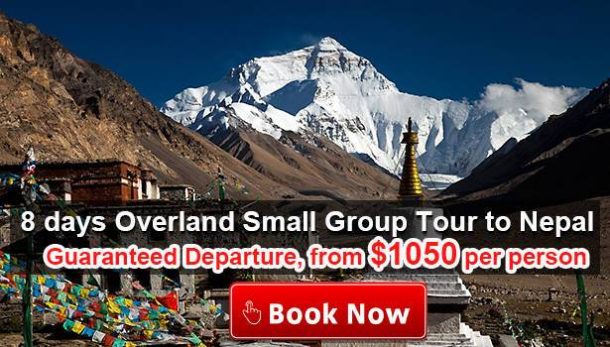
However, Tibet has often been the subject of some bad publicity, with inaccurate reports of the dangers of traveling to Tibet, from terminal altitude sickness and the reports of mountaineers that have died while climbing to reports of wild animal attacks and poor food and sanitation.
Contrary to what you may have heard about the dangers of traveling to Tibet, this unique land on the Roof of the World is actually a safe place to visit and is no more dangerous than crossing the road at home, you just need to follow a few simple guidelines. With a few tips on some of the concerns for travelers in Tibet, you can make your journey to Tibet the best possible vacation and a safe place to tour around.
Table of Contents
Is Altitude Sickness really dangerous?
Altitude Sickness, also known as Acute Mountain Sickness (AMS), is not necessarily fatal, and in the majority of cases, it is little more than a few irritable and inconvenient symptoms that last for a couple of days at most. Altitude sickness, or the symptoms of AMS, are the body’s way of adjusting to the increased altitudes of the Tibetan plateau. Most people around the world live at altitudes of less than 2,000 meters (6,560 feet) above sea level. At any altitude below this, the pressure of the atmosphere keeps the air dense enough for normal breathing.
However, at higher altitudes, the pressure is lower, allowing the air to become less dense. This results in a lack of oxygen in the lungs and a reduced amount of oxygen getting to the bloodstream with each breath. In order to counter this lack, the body starts to naturally produce more red blood cells to carry more oxygen around the body from the thinner atmosphere.
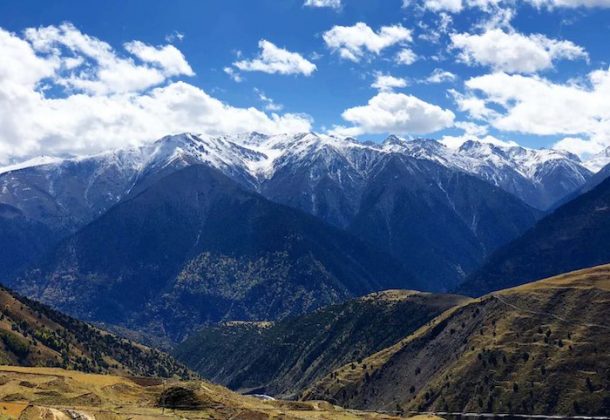
During this period of adjustment, you may find that you suffer from headaches, dizziness, nausea, and dehydration, among other things, until the body has “acclimatized”. This takes from 1-2 days for most people, as long as you remain hydrated, eat properly, and avoid strenuous exercise and faster increase in altitude.
Severe altitude sickness occurs when travelers do not acclimatize properly, travel to higher altitudes without a break to acclimatize at a fast pace, or perform strenuous activities while acclimatizing. However, even this can be easily treated with some medications if close to a hospital or by simply moving to a lower altitude immediately.
The most severe effects of extreme altitude sickness occur when traveling at extreme altitudes of more than 5,500 meters for more than a very short period of time. Climbing to altitudes above this without supplemental oxygen or periods of acclimatization can lead to High Altitude Pulmonary Edema (HAPE) or High Altitude Cerebral Edema (HACE), both of which can be fatal.
Since tours of Tibet only reach altitudes above 5,000 meters at places like Everest Base Camp and some of the high passes you will cross over, there is almost no risk of this occurring during your trip.
Can I really get sunburn on the Tibetan Plateau?
The weather in Tibet is unique to the plateau environment, and at the higher altitudes, very strong UV sunlight, thinner atmosphere, and an arid climate are commonplace. Another factor of the unique climate of the plateau is the massive difference in temperatures between day and night. All of this makes up the typical plateau climate in Tibet, and it can take a while to get used to some of these drastically different conditions.
However, there are ways to get used to them quickly or to avoid their effects altogether, with just a few helpful hints and tips. For the strong UV sunlight, due to the thinner atmosphere, it is best to always wear a hat and sunglasses when outside, to keep the harmful UV rays from your head and eyes. The sun is brighter at higher altitudes and can be blinding in some cases, so a good pair of UV filtering sunglasses can help. UV rays can also affect the head if left under the sun unprotected for a while. This can cause sunstroke and heatstroke, which can be detrimental to your tour.
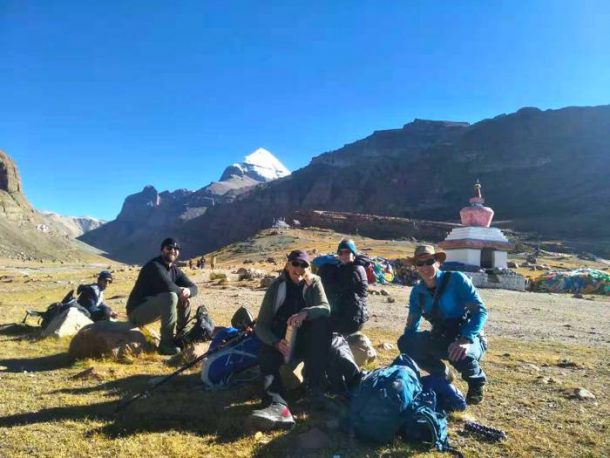
A simple hat, preferably with a brim of some kind, can help to keep the harmful UV rays off your head and prevent illnesses. While UV-A rays affect the head and body at a deeper level, UV-B rays are what causes sunburn, and even in mild temperatures, the sun is strong enough to leave you badly sunburned at this altitude. A good factor-30 sunblock can help to reduce sunburn on your face and arms.
Is Tibet as cold as everyone says it is?
Tibet lies on a high plateau that is commonly known as the Roof of the World. At this increased altitude, the weather systems are very different from what you know at home, and the plateau can get very cold in the winter months.
However, even in the winter, you can find the daytime to be warm enough to travel in most parts of the plateau, with temperatures that can reach as high as 12-15 degrees. It is normally the nights that are the coldest when the warming rays of the sun have gone and the chilly night air comes in. The nights can often get down to well below freezing in winter, and even in the summer months in some places.
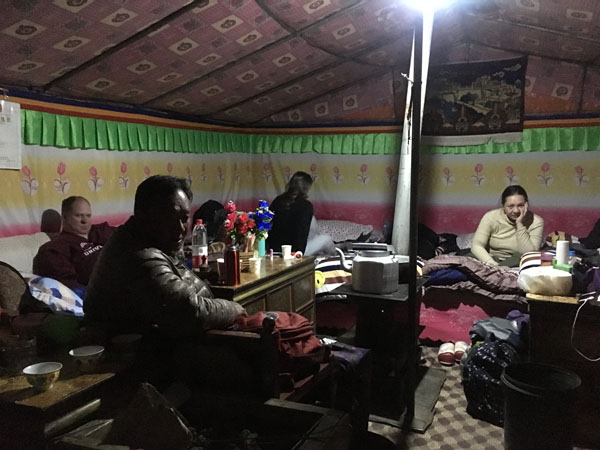
You may find that the massive change in temperatures from day to night is a little daunting. In fact, there is little to worry about in this respect, and the simplest way to defeat this concern is to make sure that you have warmer clothing for the evenings and a good arctic-rated sleeping bag for the nights. This is barely needed in some areas in the summer months, such as Lhasa and Nyingchi, where the temperature at night can still be a little above freezing.
Do I need any particular vaccinations for Tibet?
Travel in Asia normally requires you to have had your standard vaccinations, such as tetanus, diphtheria, whooping cough, Hepatitis A, and typhoid, which are normally given in one shot before traveling in most western countries. These shots are usually available from your own doctor, who can advise on the best vaccinations for traveling around Asia. When it comes to Tibet, there are no region-specific vaccinations that you need to have before visiting the plateau aside from the usual vaccinations for Asia.
However, it is advisable to steer clear of any wild animals and wild or stray dogs, as there is the potential for rabies in most countries throughout Asia still. If you are confronted by dogs, whether wild or owned, stay clear and take a different route to where you are headed, or stay in the car. For those trekking on the plateau, your guide will explain how to avoid wild animals and how to scare them off if they come too close.
What to do if I get sick or injured in Tibet?
While none of us wants to get ill or be injured on a tour of Tibet, there are times when it cannot be helped. And if the unthinkable does happen, then knowing what to do next is just as important as getting treatment. The first thing to do if you are ill or injured is to tell your guide. All of our guides are trained in first aid and the effects of altitude sickness, have mobile phones for immediate contact with our support teams or the local hospitals and clinics and can get you to treatment centers as quickly as possible.
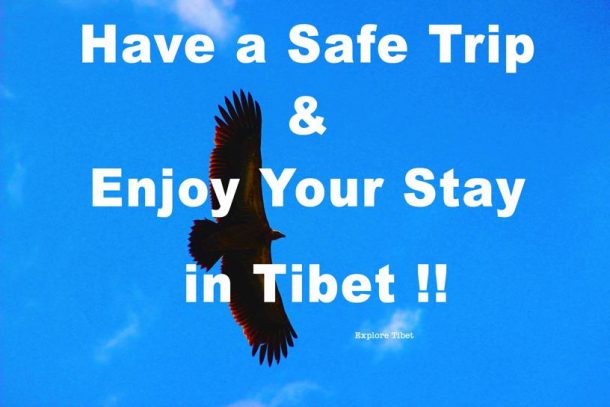
If the problem stems from AMS or more severe altitude sickness, the guide will help you or move you to a lower altitude immediately. For minor injuries and scrapes, a first aid kit is included in the vehicle, and it is recommended that you carry a small first aid kit with you, especially when trekking.
Recent Posts
The Ultimate Guide to Tibet Tours, Travel, and Trekking Adventures
How to Explore Tibetan Culture
Exploring Lhasa:The Heart of Tibet
All Categories
- About Tibet
- book a Tibet tour
- Buddhism Practice
- Budget Tour
- China-Tibet Train
- Customized Tibet tour
- Historical Sites
- Hot Springs in Tibet
- News
- Photography in Tibet
- Tibet attraction
- Tibet Group Visa
- Tibet Motorcycle Tour
- Tibet Small Group Tours
- Tibet Tours and Tibetan Tour Guide
- Tibet Train
- Tibet Travel FAQs
- Tibet Travel Information
- Tibet Travel News
- Tibet Travel Permit Update
- Tibet Travel Prices Rises
- Tibet Trek
- Tibet Trekking Tour
- Tibet weather and climate
- Tibet Wildlife animals
- Tibet Winter Tour
- Tibetan Buddhism
- Tibetan Cultural Features
- Tibetan Culture and Poeple
- Tibetan Festivals
- What to see in Tibet



